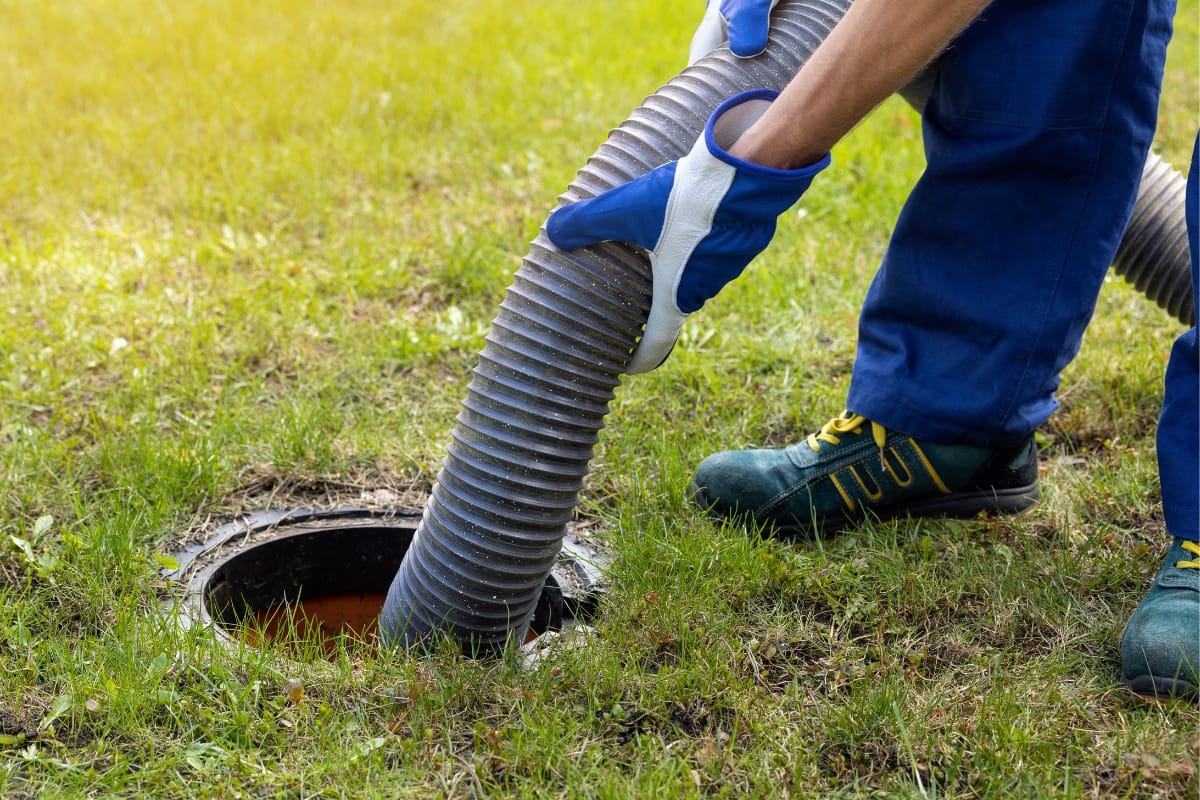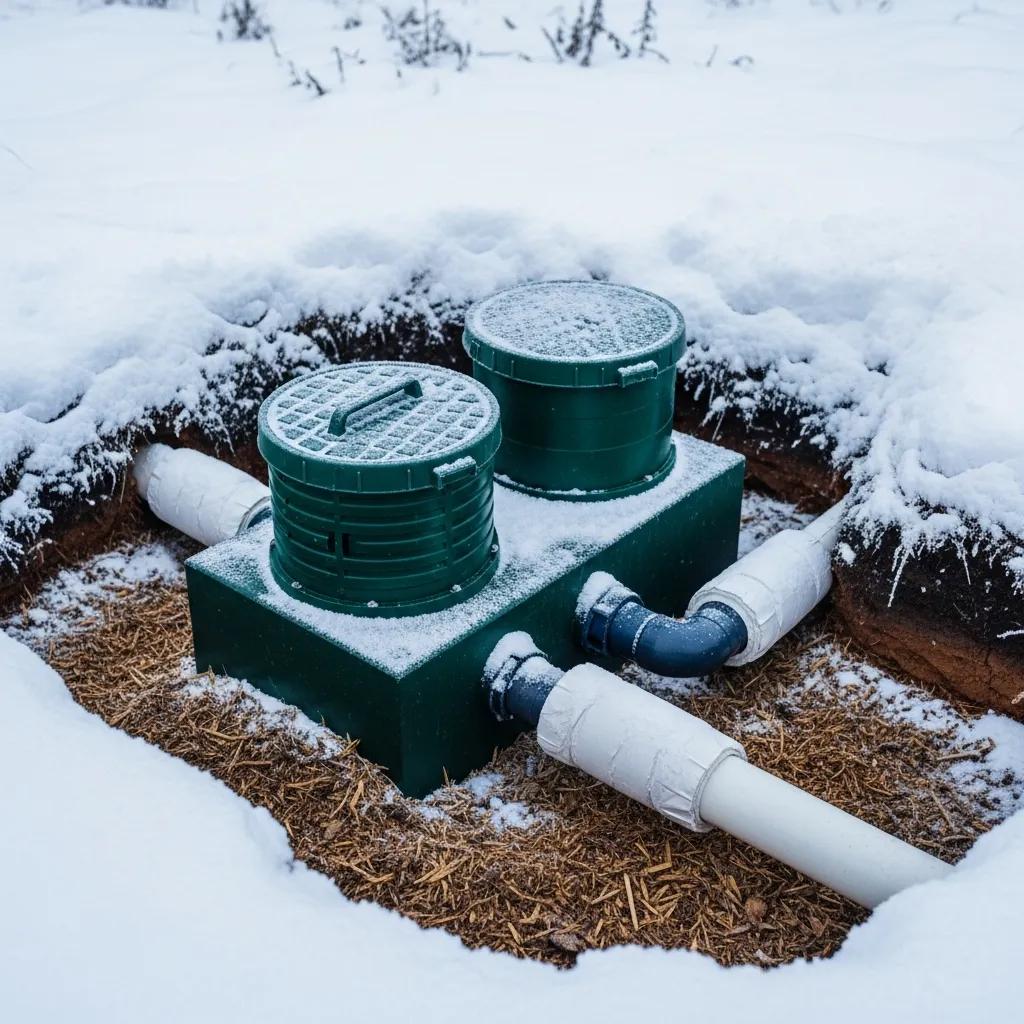Maintaining your septic tank is essential for ensuring a safe and efficient wastewater system in your home. Without regular care, septic systems can face issues that lead to unpleasant odors, costly repairs, and even environmental damage.
This essential guide explores practical and effective strategies for residential septic tank maintenance, covering everything from regular pumping schedules to responsible water use and drain care. By following these septic system care strategies, you can extend the life of your system, prevent common issues, and protect both your property and local water sources.
Septic Tank Maintenance Made Easy: A Homeowner’s Guide
Understanding the Role of a Residential Septic Tank

A household septic system is a vital part of a home’s waste management system, managing the treatment and disposal of wastewater efficiently. This underground structure serves as a mini-wastewater treatment facility, essential for homes not connected to municipal sewer systems, and plays a significant role in maintaining household and environmental health.
Most residential septic tanks are designed with two chambers. In the first chamber, wastewater from household activities flows in and begins the separation process: heavier solids sink to the bottom, forming sludge, while oils and greases float to the top as scum.
The middle layer, known as effluent, flows into the second chamber for further treatment before it’s finally released into the drain field. This gradual, two-step process allows for maximum decomposition of waste material and efficient removal of impurities from the effluent before it enters the soil.
The system relies on natural processes and beneficial bacteria to break down solids. These bacteria play an essential role in converting organic waste into less harmful byproducts, ensuring that only well-treated water reaches the soil. This not only prevents groundwater contamination but also helps protect nearby ecosystems from the hazards associated with untreated wastewater.
Signs of a Healthy Septic System

A healthy septic system functions quietly and efficiently, often with minimal signs that it’s hard at work. Here are several indicators that your septic system is in top shape, ensuring wastewater is processed effectively while keeping your home and environment safe:
- No foul odors: One of the first signs of a functioning septic system is the lack of unpleasant odors. If your system is healthy, there should be no noticeable smells either indoors or around the tank and drain field. Foul odors often indicate a buildup of gases due to issues within the system, so their absence is a positive sign.
- Efficient drainage throughout the home: When all household drains are working efficiently, including sinks, toilets, and showers, it suggests the septic system is handling wastewater without blockages or backups. Slow drains or frequent clogs can signal that your tank is nearing capacity or that there is an obstruction somewhere in the system.
- Absence of standing water: The ground above the drain field and septic tank should remain dry and firm. Pooled water or overly saturated areas often indicate that the system may be overloaded or that there’s a drainage issue preventing the soil from absorbing treated wastewater properly.
- Healthy vegetation above the drain field: Vibrant, evenly green grass over the drain field is another encouraging sign. While some nutrients from treated wastewater can promote healthy growth, overly lush or uneven patches may point to leaks or an overloaded system. In a balanced, well-maintained septic system, vegetation will grow naturally, without excessive patches of waterlogged or nutrient-rich areas.
- Consistent tank levels: Routine inspections can verify that tank levels are stable and that scum and sludge buildup is within normal ranges. Regular checks help homeowners identify whether the system is treating wastewater as it should and that solids aren’t accumulating too quickly. This regular monitoring helps prevent overflows, clogs, or early deterioration of the system.
These signs collectively indicate that your septic system is functioning as designed, breaking down waste, and managing water efficiently.
Importance of Regular Inspections

Regular septic tank inspections are crucial to ensure that your septic system operates smoothly and effectively, safeguarding both your property and the surrounding environment. A trained septic inspector can detect early signs of issues that, if left unchecked, could lead to costly repairs, replacements, or even environmental contamination.
During an inspection, the inspector examines the tank’s structural integrity, looking for any visible signs of wear, such as cracks, leaks, or corrosion, that could compromise its performance. They also measure sludge and scum levels to determine if the tank is nearing capacity and needs pumping. Keeping sludge levels in check prevents solid waste from clogging the drain field, which is essential for proper wastewater treatment.
In addition to the tank, the inspector assesses the drain field, as its condition is critical for final wastewater treatment. A clogged or compacted drain field reduces the soil’s ability to filter effluent, which can lead to pooling water, unpleasant odors, or even contamination of nearby water sources. Some inspectors may also use a dye test to trace water flow through the system, helping to detect leaks that are otherwise invisible.
Generally, septic inspections are recommended every three years, though homes with larger families or those using garbage disposals may need more frequent check-ups due to higher waste volumes. Regular inspections and timely septic system maintenance can significantly extend the life of your septic system, saving you from unexpected costs and ensuring safe, effective waste management for years to come.
Dos and Don’ts of Septic Tank Maintenance

Taking the right steps in septic system maintenance can make a huge difference in the system’s longevity and performance. Following these simple guidelines will help keep your septic system in top shape and save on potential repair costs.
Do:
- Conserve Water: Limit unnecessary water use by fixing leaks promptly and installing water-efficient fixtures and appliances. Reducing water flow reduces strain on the system.
- Distribute Water Use: Spread out high water-usage activities like laundry and dishwashing throughout the day to avoid overloading the tank at once. This helps the system manage wastewater more effectively.
- Schedule Regular Pumping: Arrange for septic tank pumping every three to five years, or as recommended, to remove sludge buildup and prevent solids from clogging the drain field.
- Keep Records: Maintain a log of all maintenance and inspection dates, as well as any repairs. This can help track the system’s health and inform future service providers of its maintenance history.
Don’t:
- Flush Non-Biodegradable Items: Avoid flushing items like baby wipes, diapers, paper towels, or feminine products. These do not break down in the tank and can cause clogs.
- Dispose of Grease and Oil Down the Drain: Pouring fats, oils, or grease down the drain can solidify and block pipes, interfering with the bacterial processes needed to break down waste in the tank.
- Use Excess Chemicals: Limit the use of bleach, disinfectants, and other harsh chemicals that disrupt the bacterial balance in your septic system. Harmful chemicals hinder the breakdown of waste, reducing the tank’s efficiency.
By following these dos and don’ts, you can maintain a healthier septic system that functions efficiently and lasts longer, preventing headaches and costly repairs.
Benefits of Proper Waste Disposal Practices

Proper waste disposal plays a crucial role in maintaining a septic system’s efficiency and extending its lifespan. Simple, responsible practices can go a long way in preventing issues and safeguarding the environment. Here are some of the key benefits of proper waste disposal practices:
- Prevents Clogs and Backups: Avoiding non-biodegradable items, such as wipes, feminine hygiene products, and paper towels, from entering your septic system keeps it free from clogs. When non-decomposing materials build up, they restrict the flow of wastewater, increasing the likelihood of costly backups and repairs.
- Preserves Bacterial Balance: Septic systems rely on a healthy balance of bacteria to break down waste effectively. By reducing the use of harsh chemicals—like bleach and strong cleaning agents—you support the natural bacteria needed for waste digestion. This balance helps prevent solid buildup and keeps the system functioning optimally. Regularly using biodegradable and septic-safe products further enhances the environment for bacteria to thrive.
- Protects Groundwater Quality: A properly functioning septic system filters out harmful bacteria and contaminants from wastewater before it enters the surrounding soil. When the system is well-maintained and free from excessive solids and chemicals, treated wastewater is safely absorbed into the soil without risking groundwater pollution. This not only ensures safe water for nearby wells and waterways but also preserves local ecosystems that depend on clean water sources.
- Reduces Environmental Impact: Proper waste disposal practices limit harmful substances from leaching into the environment. By avoiding unnecessary chemicals, you reduce the potential for pollutants to enter natural water sources or affect nearby plant life, contributing to a healthier ecosystem. Additionally, eco-friendly waste disposal helps reduce the frequency of septic tank pumping, lessening the overall resource demand and reducing your household’s environmental footprint.
By making a few simple adjustments to daily waste disposal habits, homeowners can not only improve the longevity of their septic systems but also contribute to a healthier environment for everyone.
The Role of Enzymes and Bacteria in Septic Tank Health

Enzymes and bacteria are vital to a well-functioning septic system, as they break down organic matter and solids, facilitating smooth wastewater treatment.
These naturally occurring microorganisms convert waste into simpler compounds, reducing solid buildup and enabling the liquid effluent to pass more efficiently through the system. Without them, waste would accumulate much faster, leading to potential blockages, clogs, and even costly septic failures.
Using septic tank additives that contain beneficial bacteria and enzymes can support this natural process, particularly in systems under heavy use or those that have been exposed to chemical cleaners, which can disrupt the natural bacterial balance.
However, it’s crucial to choose products specifically formulated for septic systems. Overuse or incorrect products can cause imbalances or even damage the septic tank’s ecosystem. Always follow the manufacturer’s directions for safe and effective use.
Additionally, routine pumping and septic tank cleaning are essential to maintaining an optimal environment for these microorganisms. As sludge and scum accumulate over time, the available space for bacteria to operate decreases, which can inhibit their ability to effectively break down waste. Regular pumping helps remove these excessive solids, allowing bacteria to work at maximum efficiency.
Furthermore, simple lifestyle practices like limiting bleach or harsh cleaners can prevent killing beneficial bacteria, thus supporting ongoing septic health. Incorporating these habits ensures that enzymes and bacteria within the system remain active and effective, keeping the entire septic system in optimal working condition for years to come.
Pumping and Cleaning Schedules Demystified

Keeping your septic tank on a regular pumping schedule is essential for preventing solid waste buildup, which, if left unchecked, can lead to system clogs and even costly repairs. How often you need to pump depends on several factors, each influencing how quickly solids accumulate in your tank.
Household Size and Wastewater Volume
Larger households produce more wastewater and introduce more solid waste into the system. Homes with more people require more frequent pumping, while smaller households can often extend the time between services.
Tank Size and Usage Habits
The size of your septic tank is also crucial; larger tanks can accommodate more waste, which may allow for less frequent pumping. However, a garbage disposal can add significantly to solid waste levels, meaning homes with disposals might need more regular pumping.
Homes with heavy water usage, such as daily laundry or long showers, can put additional strain on the system, impacting the necessary frequency of service.
The Three-to-Five Year Guideline
Most professionals recommend pumping your septic tank every three to five years as a general guideline. This estimate can vary, especially if you have unique household dynamics or a smaller tank.
To better assess the right schedule, consult a professional septic service provider who can evaluate your specific system and usage patterns. Regular septic tank system checks may reveal whether your tank is filling up faster than expected, providing you with a customized pumping schedule.
Additional Preventive Practices
In addition to pumping, adopting water conservation practices and avoiding flushing non-biodegradable items can extend the time between services. Maintaining an accurate record of pumping and inspections also helps you stay on top of your system’s needs, giving you peace of mind that your septic tank is operating efficiently.
Understanding and following a tailored pumping schedule is key to a long-lasting, trouble-free septic system. By consulting with professionals and taking these variables into account, you’ll not only avoid unexpected backups but also protect your system’s health for years to come.
Common Septic Tank Issues and Troubleshooting Tips

When it comes to residential septic tank maintenance, understanding common issues and troubleshooting tips is crucial for ensuring the smooth operation of your system. Here are some of the most frequent septic tank problems homeowners face along with effective solutions to keep your septic system running efficiently.
- Clogs and Blockages: Clogs in septic tanks can occur due to the accumulation of solid waste and debris. To prevent clogs, avoid flushing non-biodegradable items such as paper towels, feminine hygiene products, or grease down the drain. Regular pumping of the tank every 3-5 years can also help prevent blockages.
- Septic Tank Odors: Foul odors emanating from your septic tank can be a sign of a problem. This can be caused by a full tank, a leak in the system, or a malfunctioning component. Inspect the tank for any visible leaks or damage, and ensure proper ventilation in the septic system to minimize odors.
- Drain Field Issues: A soggy or flooded drain field indicates a problem with the absorption of wastewater. This can be caused by a high water table, compacted soil, or tree root infiltration. To troubleshoot drain field issues, divert excess water away from the area and avoid planting trees or shrubs nearby.
- Toilet and Drain Backup: Backups in toilets and drains can be a sign of a full septic tank or a blockage in the plumbing. If you experience backups, avoid using water and contact a professional septic tank service to inspect and address the issue promptly.
- Pump Failure:
Septic tank pumps play a crucial role in moving wastewater from the tank to the drain field. Pump failure can lead to backups and system malfunctions. Regular maintenance and inspection of the pump can help prevent failures and ensure the proper functioning of your septic system.
By addressing these common septic tank issues promptly and implementing preventive maintenance strategies, you can extend the lifespan of your septic system and minimize costly repairs. Remember to schedule regular inspections and maintenance with a qualified septic system professional to keep your system in optimal condition.
Conclusion: Committing to Long-Term Septic Tank Health
Implementing effective septic maintenance strategies is essential to keep your system running smoothly and avoid unexpected repairs. By understanding its role, following effective maintenance strategies, and adopting responsible waste disposal practices, you can ensure that your septic system operates efficiently for years to come.
For expert guidance and top-notch septic services tailored to your specific needs, choose Smart Septic Pros. Contact us today at 678-993-4545, or get your septic needs addressed by filling out our website form. Let’s help you keep your residential septic system in peak condition, protecting both your property and the environment.



